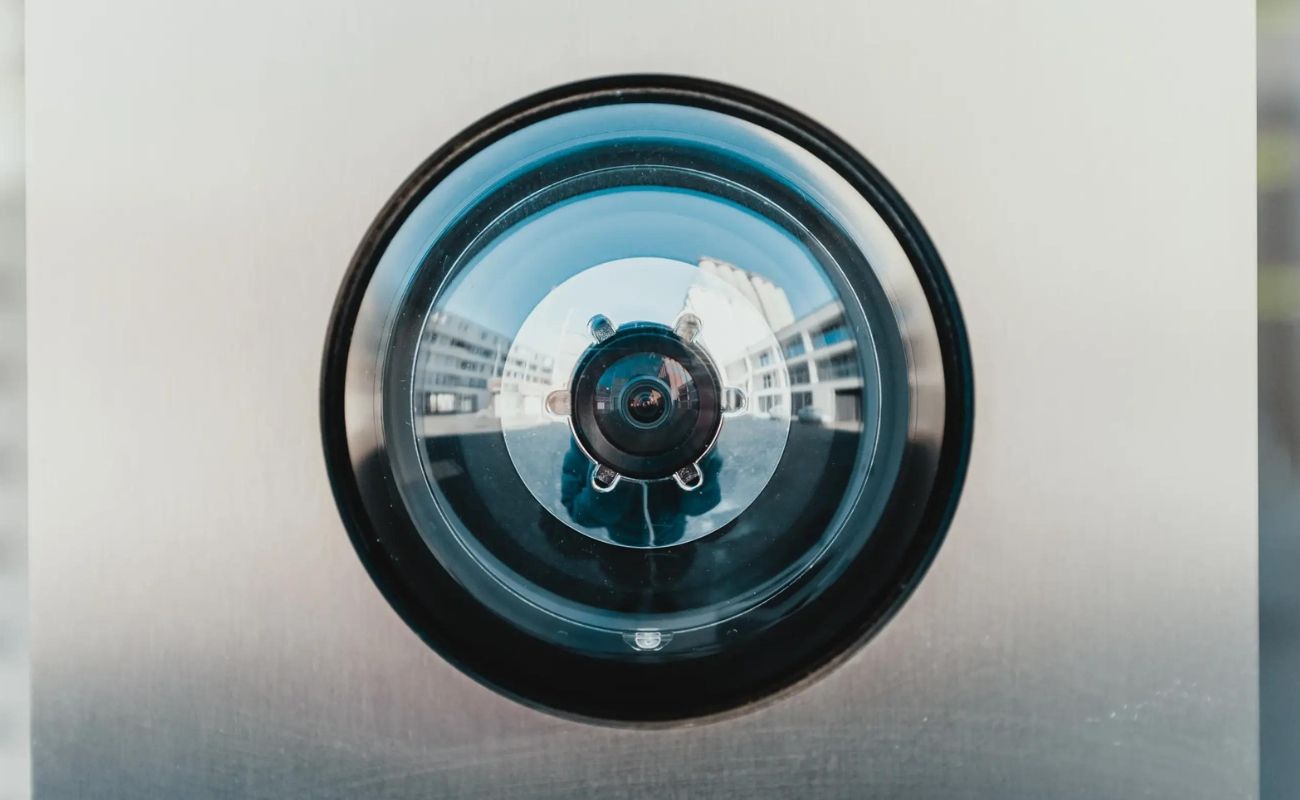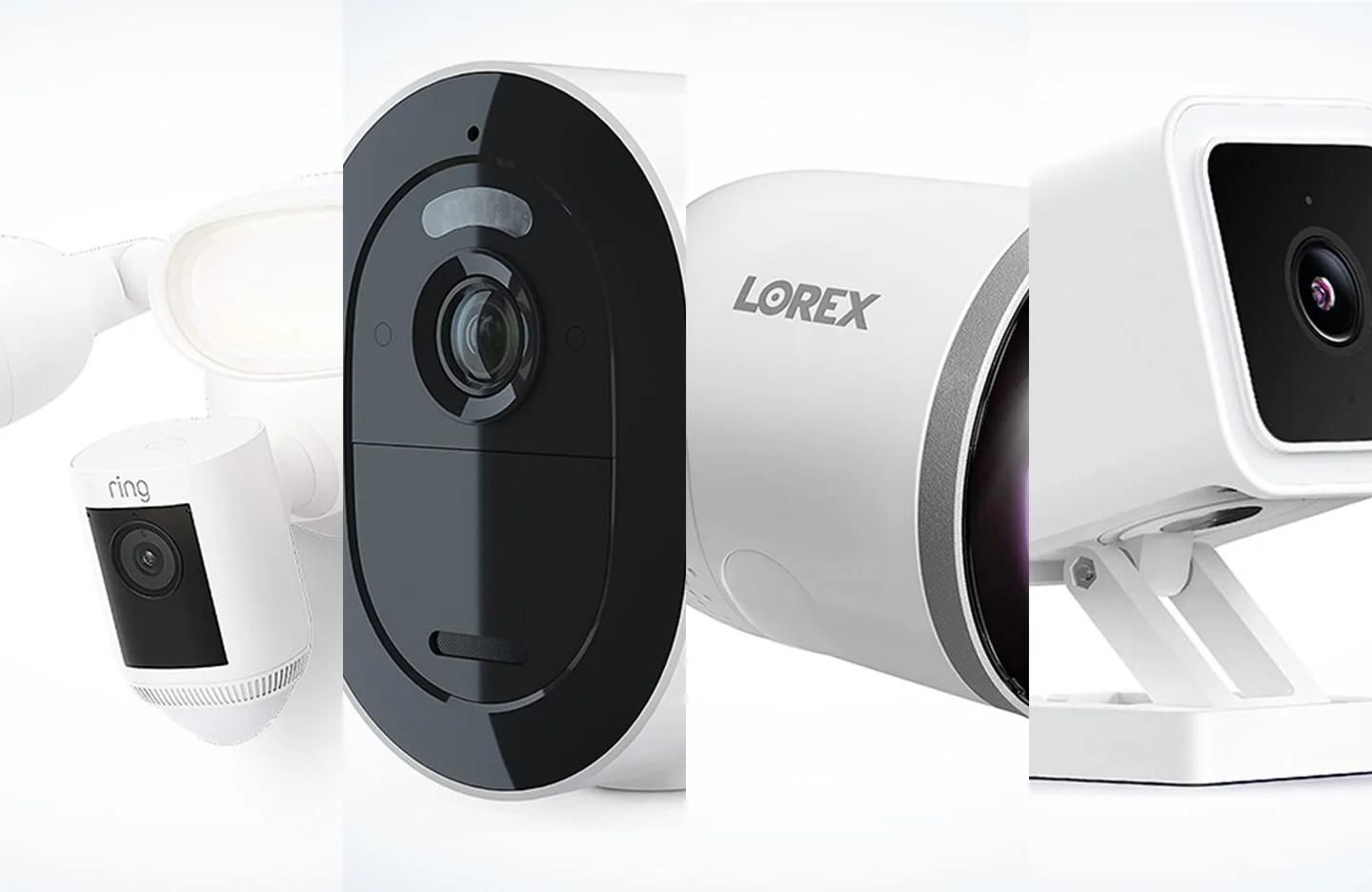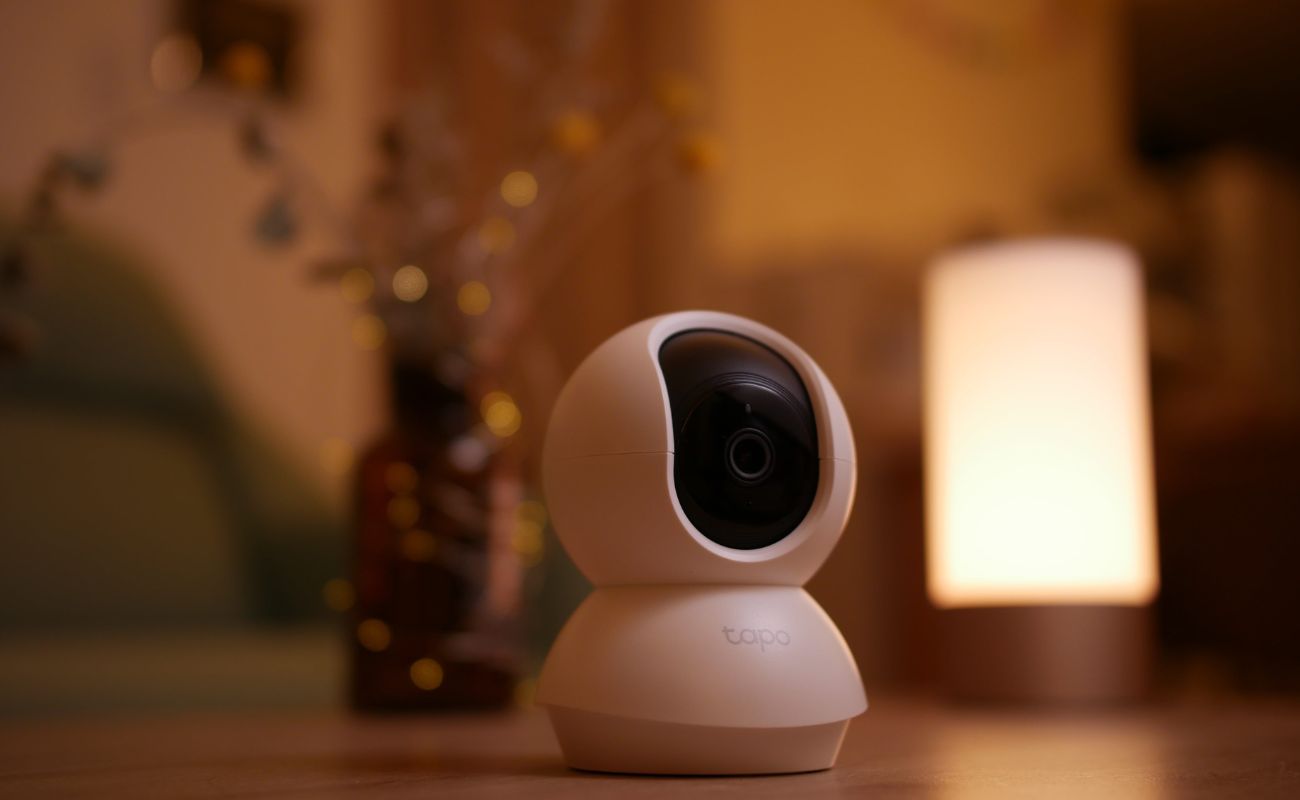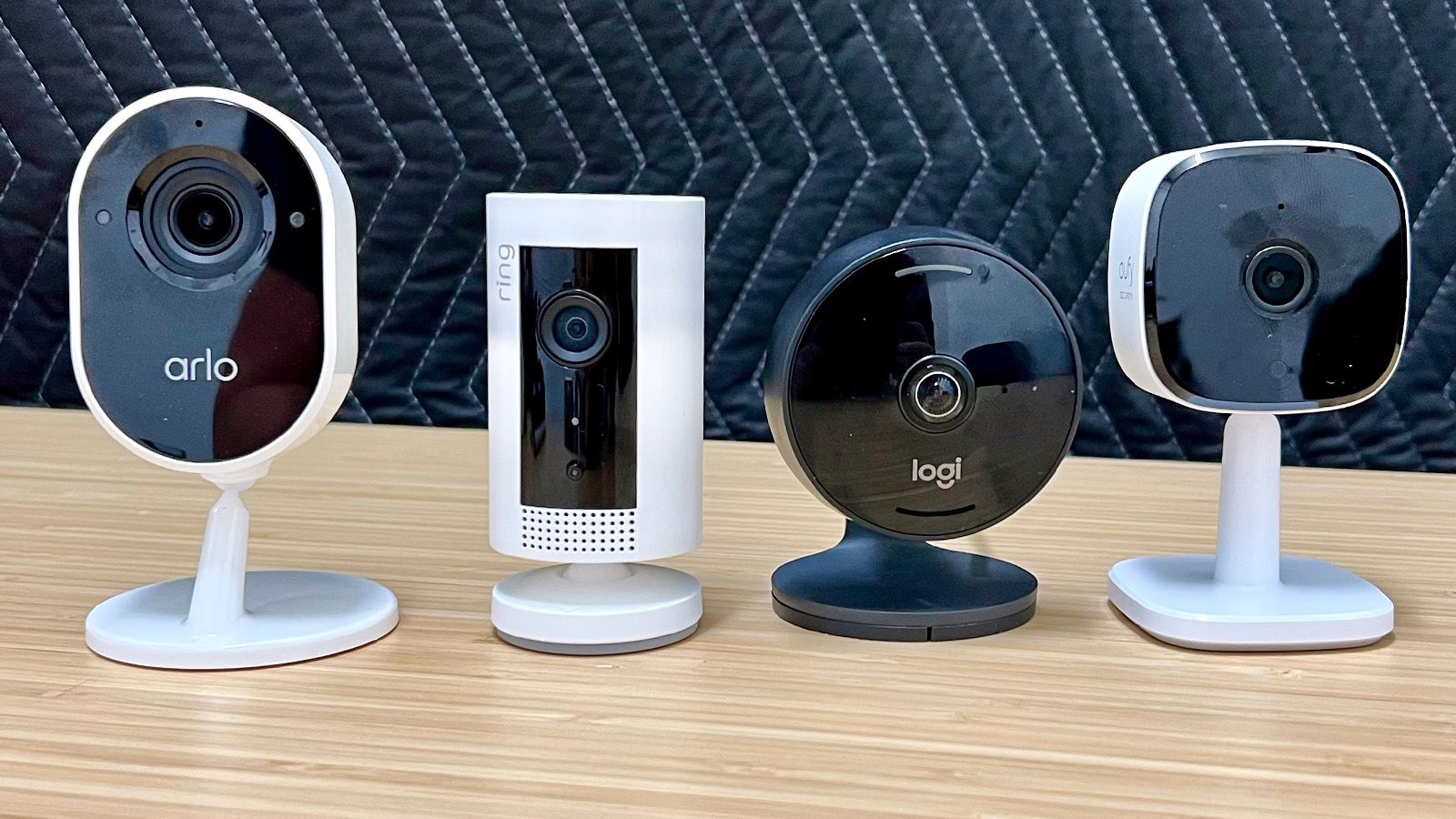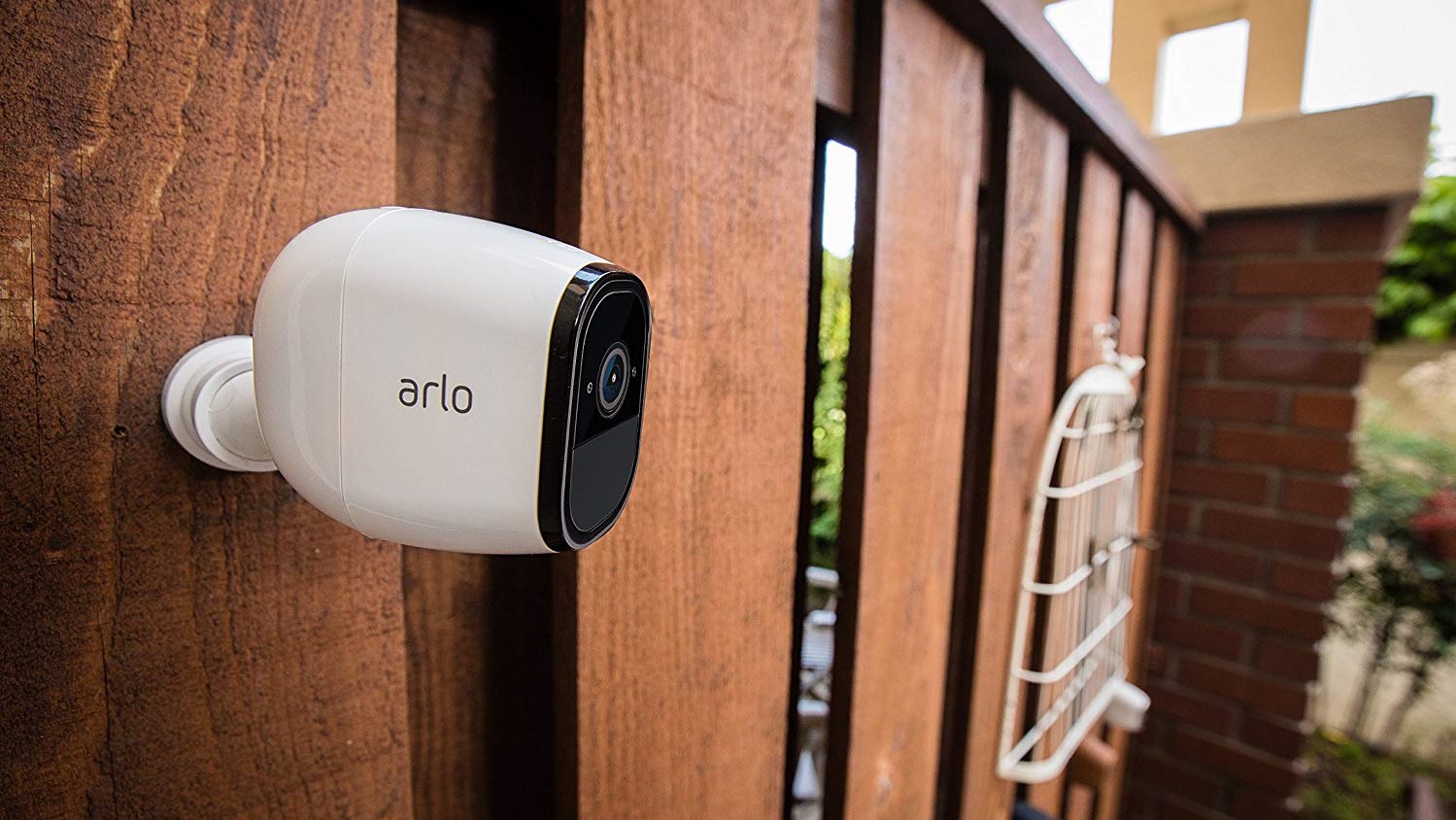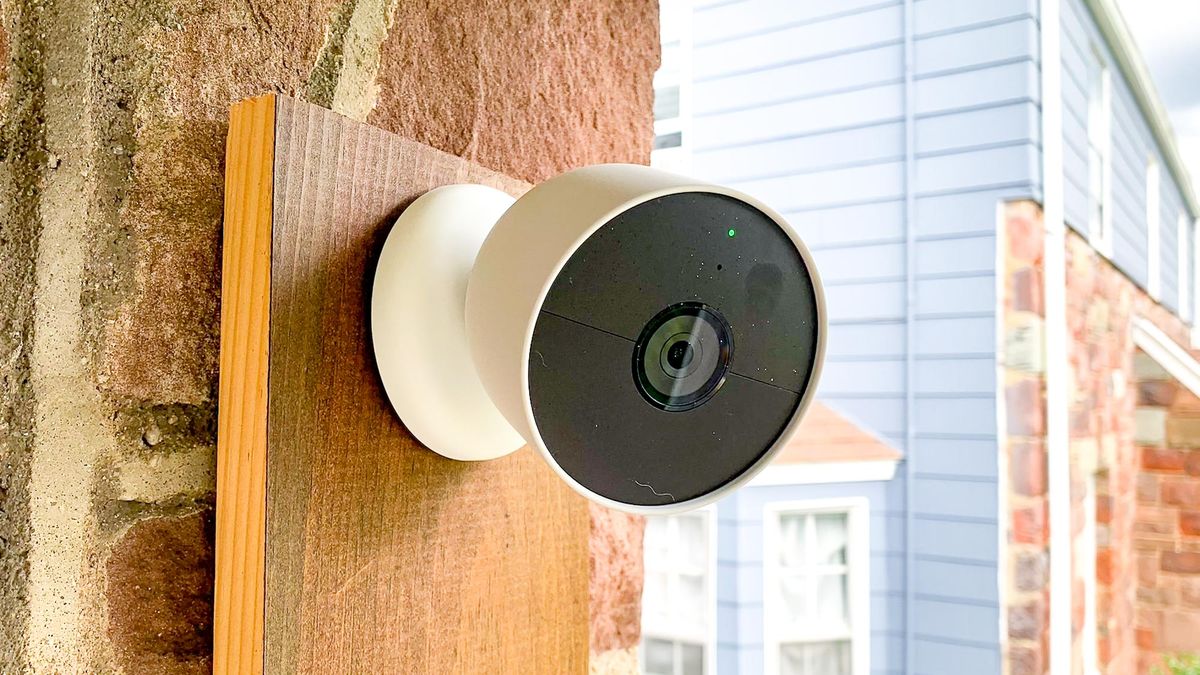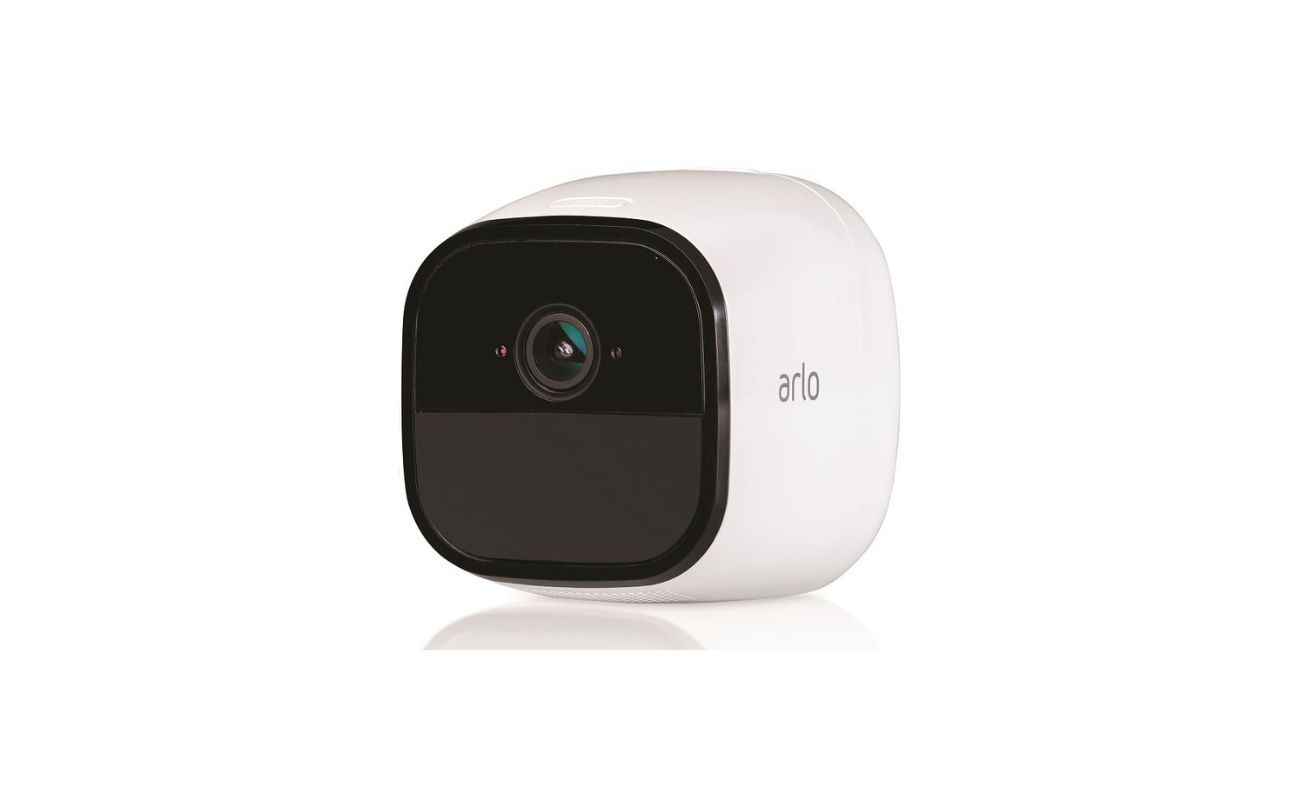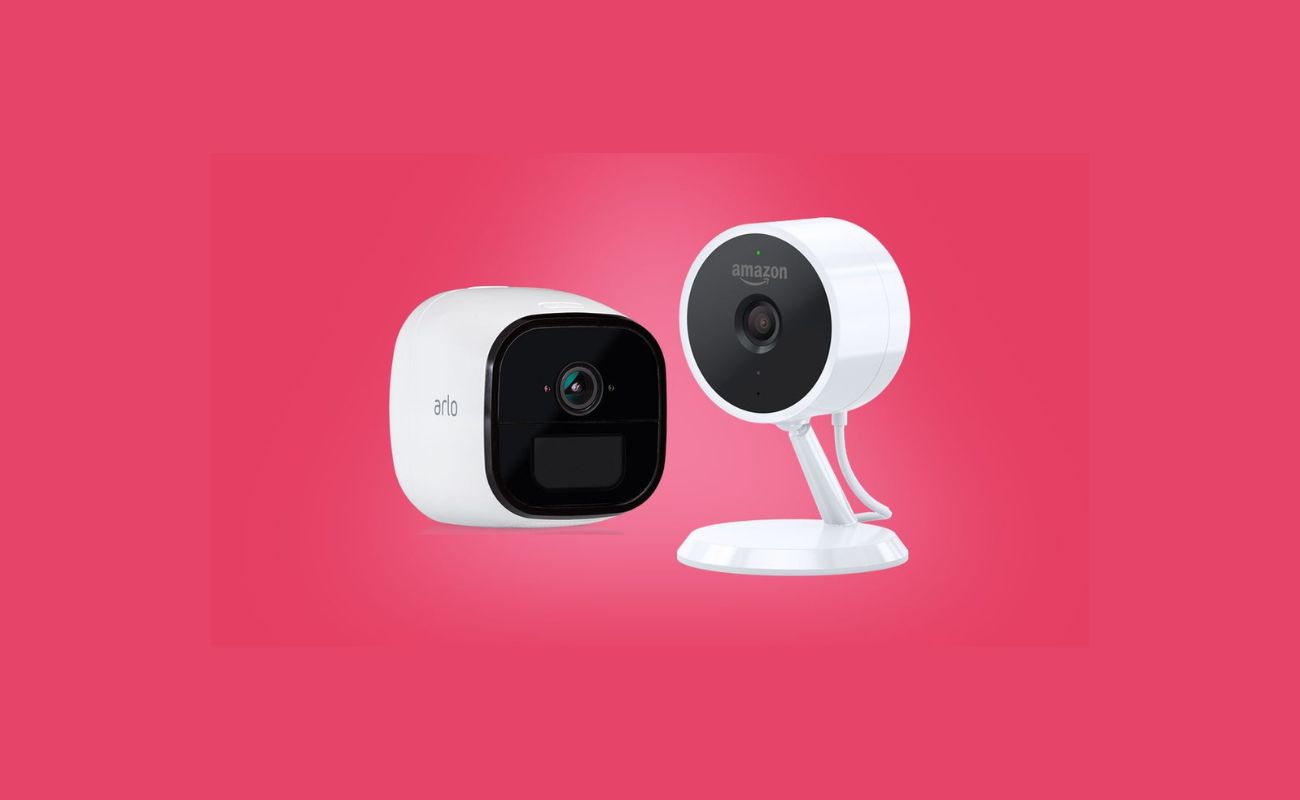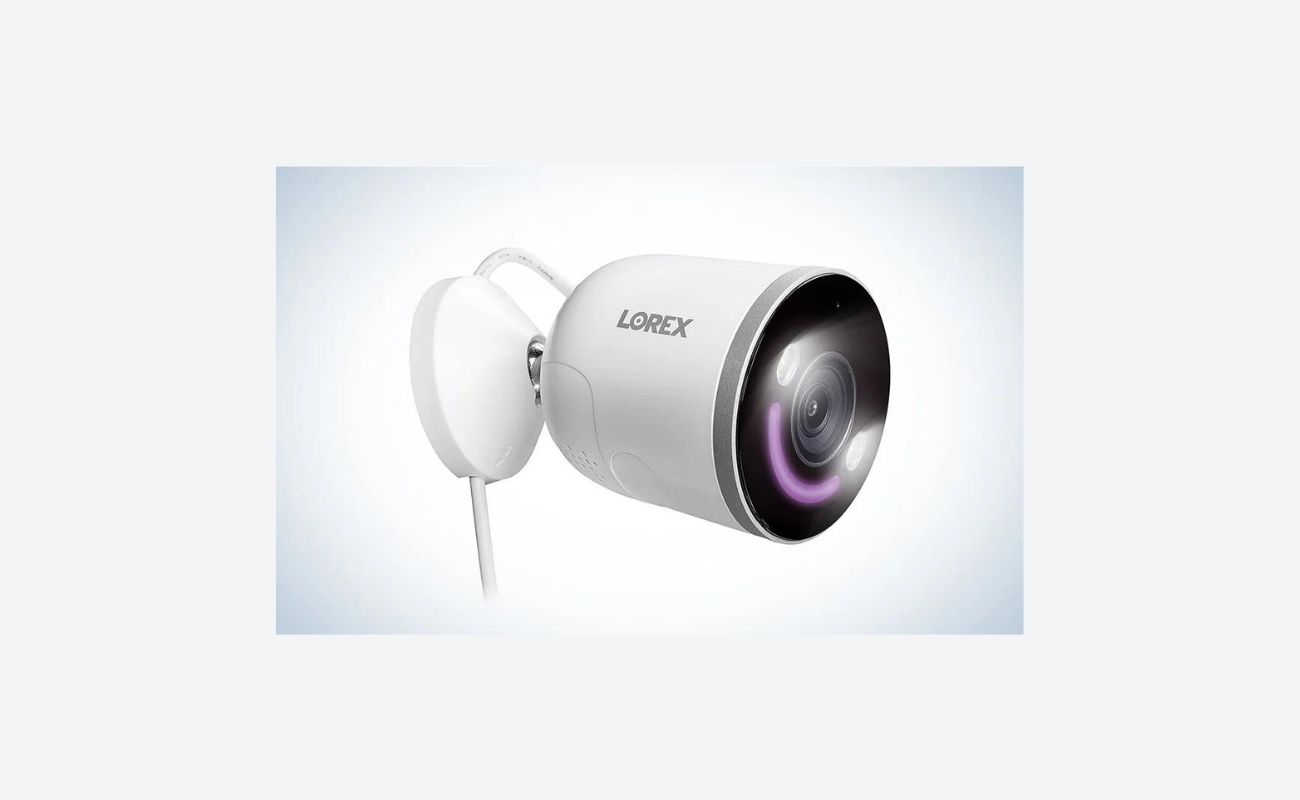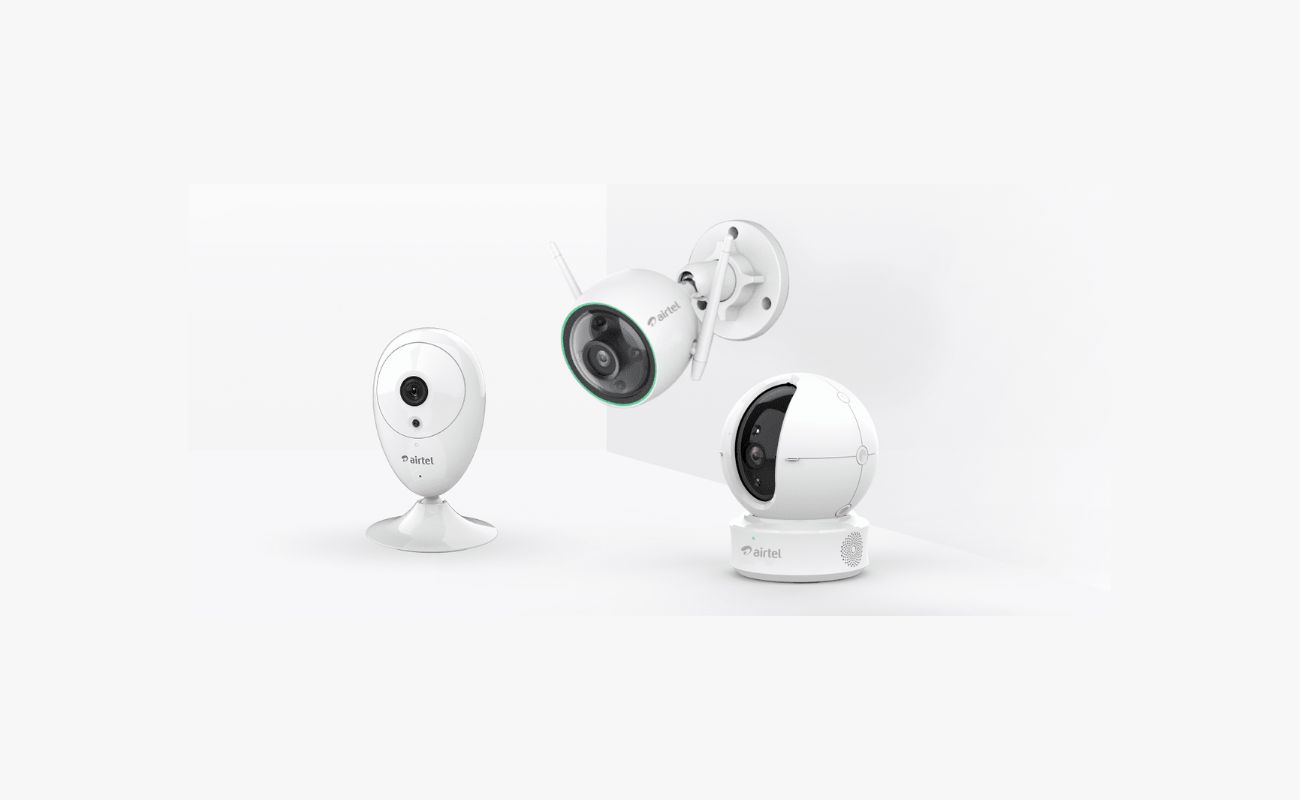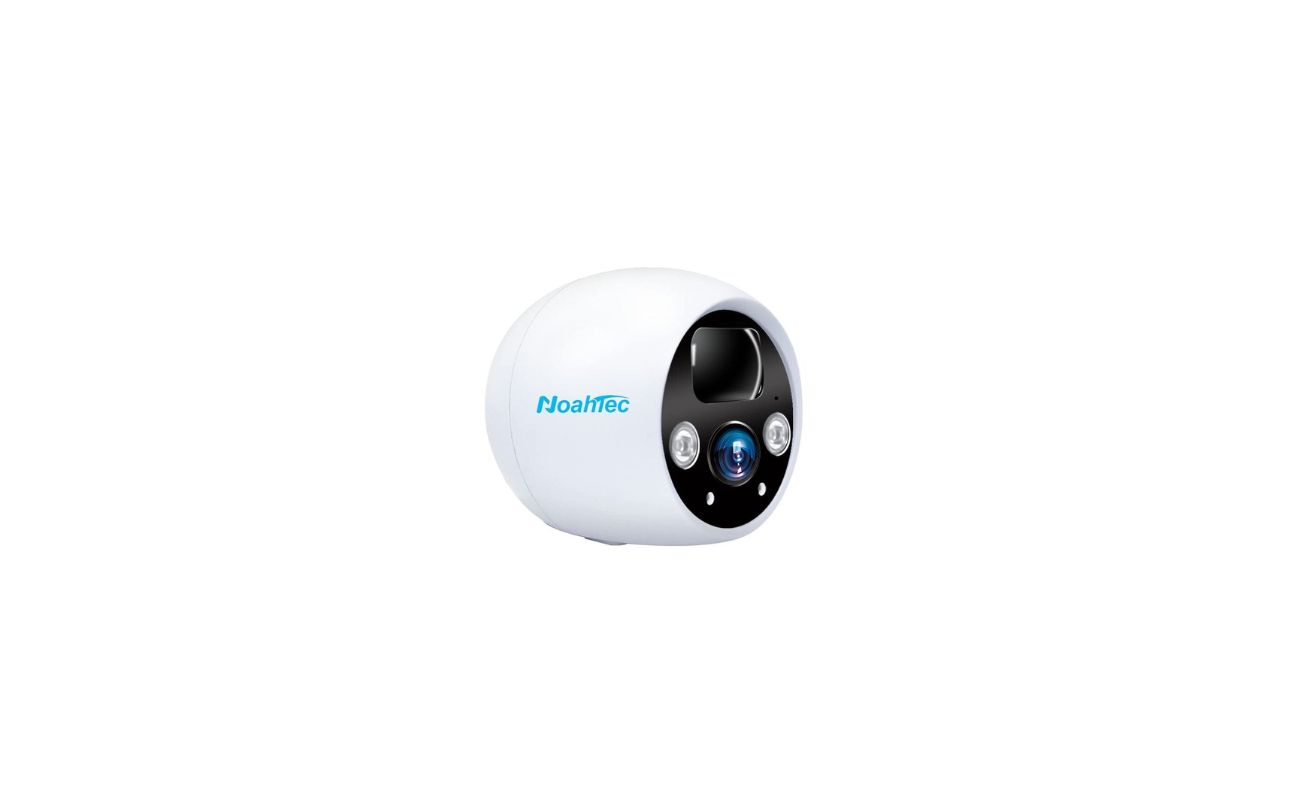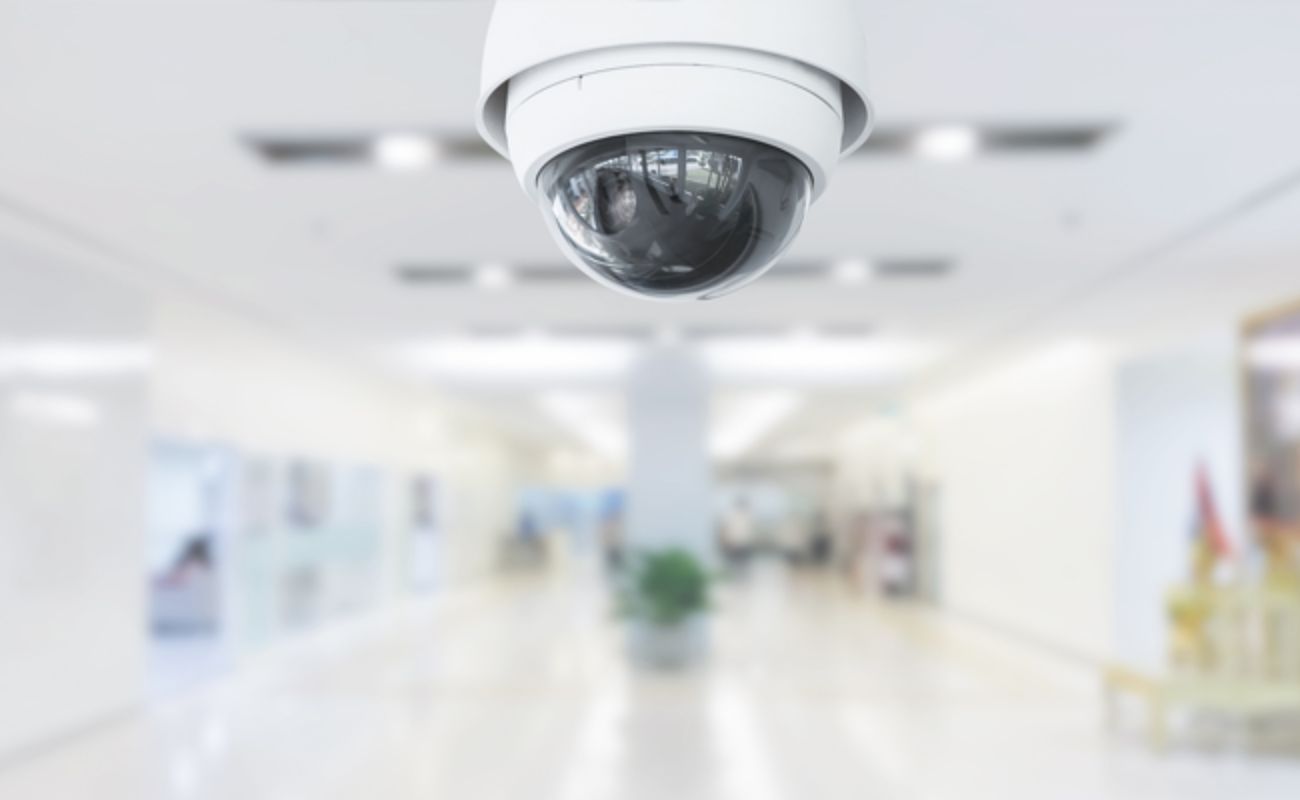Home>Home Security and Surveillance>What All Is Needed For Wireless Security Camera System
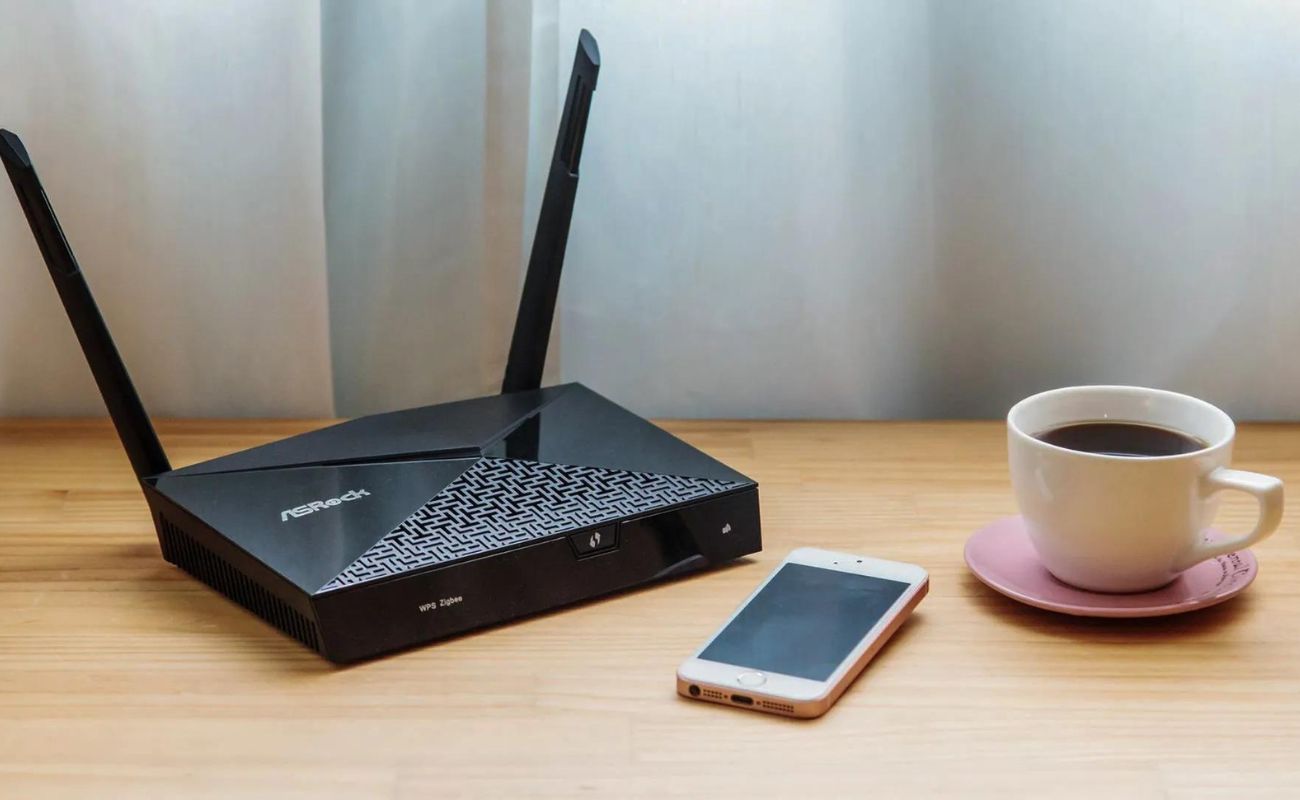

Home Security and Surveillance
What All Is Needed For Wireless Security Camera System
Modified: March 6, 2024
Ensure the safety of your home with a wireless security camera system. Explore our comprehensive range of home security and surveillance solutions for optimal protection.
(Many of the links in this article redirect to a specific reviewed product. Your purchase of these products through affiliate links helps to generate commission for Storables.com, at no extra cost. Learn more)
Introduction
In today’s world, ensuring the safety and security of our homes has become a top priority. With the increasing prevalence of crime and the need for constant surveillance, a wireless security camera system has emerged as a popular choice for many homeowners. This advanced technology allows for remote monitoring of our properties, providing peace of mind and a sense of security.
Wireless security camera systems have revolutionized the way we protect our homes. Gone are the days of relying solely on traditional wired surveillance systems that require extensive wiring and professional installation. With wireless systems, installation becomes hassle-free, and the flexibility and versatility they offer are unmatched.
Before diving into the specifics of what is needed for a wireless security camera system, it’s essential to have a basic understanding of how it works. Wireless cameras transmit video and audio signals without the need for physical cables. Instead, they utilize wireless transmitters to send the signals to a receiver connected to a viewing device, such as a smartphone, tablet, or computer. This wireless transmission eliminates the need for complex wiring, making installation much more straightforward.
Now, let’s explore the essential components required to set up a reliable wireless security camera system for your home.
Key Takeaways:
- Choosing the right power source, camera features, and network connection is crucial for setting up a reliable wireless security camera system. Consider your specific needs and property layout to ensure uninterrupted surveillance.
- Selecting a monitoring device and implementing robust security features are essential for effective surveillance. Regular maintenance and upkeep of the system ensure its optimal performance and longevity.
Power Source
A crucial aspect of any wireless security camera system is the power source. Without a reliable power supply, the cameras will not be able to function effectively. There are primarily two types of power options to consider: battery-powered and plug-in cameras.
Battery-powered cameras offer the benefit of flexibility and can be placed in locations with limited access to power outlets. They are easy to install and can be moved around as needed. However, it’s important to keep in mind that battery life can vary depending on the camera model and usage. Regular monitoring and maintenance of battery levels are essential to ensure uninterrupted surveillance.
On the other hand, plug-in cameras require a constant power source and need to be connected to a power outlet. They provide a reliable power supply and can operate continuously, allowing for round-the-clock surveillance without the need to worry about battery life. Plug-in cameras are ideal for areas where power outlets are easily accessible, such as near windows or entrances.
When choosing between battery-powered and plug-in cameras, it’s important to consider the specific needs of your home. If you have a large property or areas with limited access to power outlets, battery-powered cameras may be a better option. Conversely, if continuous monitoring is a priority or you have easy access to power outlets, plug-in cameras would be the recommended choice.
Additionally, it’s wise to invest in cameras with power backup options. This ensures that even in the event of a power outage, the cameras will continue to operate and provide surveillance. Some cameras come with built-in rechargeable batteries or backup power options such as solar panels, further enhancing their reliability.
Overall, selecting the appropriate power source for your wireless security camera system is essential to ensure uninterrupted surveillance. Consider your specific needs, the layout of your property, and the availability of power outlets when making this decision.
Camera
When it comes to choosing the right camera for your wireless security camera system, several factors should be considered, including resolution, field of view, night vision capabilities, and weather resistance.
Resolution: The resolution of the camera determines the clarity and quality of the captured video footage. Higher resolution cameras, such as those with 1080p or even 4K resolutions, provide sharper and more detailed images. This is particularly important when it comes to identifying faces or objects in the footage. However, it’s important to note that higher resolutions may also require more storage space.
Field of View: The field of view refers to the area that the camera can capture. Cameras with wider angles provide a larger coverage area, allowing you to monitor a larger space with fewer cameras. For example, a camera with a 120-degree field of view can cover more ground compared to a camera with a 90-degree field of view. Consider the layout of your property and the areas you want to monitor when selecting the appropriate field of view for your cameras.
Night Vision: Night vision capabilities are crucial for outdoor cameras or areas with low light conditions. Look for cameras with infrared LEDs, which enable them to capture clear footage even in complete darkness. The range of the night vision capabilities is also an important consideration. Some cameras can provide visibility up to 100 feet or more, ensuring comprehensive surveillance during nighttime hours.
Weather Resistance: If you plan to install cameras outdoors, it’s essential to choose cameras that are weather-resistant. Look for cameras with an IP (Ingress Protection) rating, indicating their ability to withstand various weather conditions. A higher IP rating, such as IP66 or IP67, ensures that the camera is waterproof, dustproof, and capable of withstanding extreme temperatures.
Additionally, consider the placement and positioning of the cameras. Strategically placing cameras at entrances, in areas with high foot traffic, and near valuables provides optimal surveillance coverage. Some cameras also come with pan, tilt, and zoom (PTZ) features, allowing you to adjust the camera’s viewing angle remotely.
Finally, it’s important to consider the aesthetics of the camera. Wireless cameras usually come in a range of designs and styles. Choose cameras that blend well with the overall aesthetics of your home to maintain a seamless and discreet surveillance system.
By considering these factors and selecting cameras that meet your specific needs, you can ensure that your wireless security camera system provides comprehensive coverage and reliable monitoring for your home.
Wireless Transmitter
A wireless transmitter is a fundamental component of a wireless security camera system. It is responsible for transmitting the video and audio signals from the cameras to the receiver or monitoring device.
The wireless transmitter operates on a specific frequency band, typically 2.4 GHz or 5.8 GHz. It sends the signals wirelessly, eliminating the need for physical cables and allowing for flexible placement of the cameras. The choice of frequency band depends on several factors, including the wireless range, interference from other devices, and the overall performance of the system.
When selecting a wireless transmitter, consider the range it can cover. The range of a transmitter refers to the maximum distance it can transmit the signals effectively. This range can vary depending on factors such as obstacles (walls, buildings, etc.) and interference from other electronic devices. It’s crucial to choose a transmitter with a range that suits your specific monitoring needs.
Another important consideration is the signal strength and reliability of the transmitter. Look for transmitters with strong signal transmission capabilities, ensuring that the video and audio signals are delivered without interruptions or loss of quality. Some transmitters come with antennas that can enhance the signal strength and improve the overall performance of the system.
Furthermore, it’s essential to choose a wireless transmitter that supports secure transmission protocols. Encryption protocols such as WPA2-PSK (Wi-Fi Protected Access 2 – Pre Shared Key) or similar ensure that the signals transmitted from the cameras to the receiver are encrypted and secure from unauthorized access. This is especially important when monitoring sensitive areas or when privacy is a concern.
Finally, consider the compatibility of the wireless transmitter with the cameras and receiver. Ensure that they operate on the same frequency band and are compatible with each other to ensure seamless communication between the components.
By selecting a reliable and high-quality wireless transmitter, you can ensure smooth and uninterrupted transmission of video and audio signals, enhancing the overall performance and effectiveness of your wireless security camera system.
Receiver
The receiver is a crucial component of a wireless security camera system as it is responsible for receiving and processing the video and audio signals transmitted by the cameras via the wireless transmitters.
When choosing a receiver for your wireless security camera system, there are several factors to consider.
Firstly, consider the number of camera channels the receiver can support. Each camera requires its own channel to transmit the signals. Therefore, if you plan to have multiple cameras within your system, it’s important to choose a receiver that can accommodate the desired number of channels. This ensures that all cameras can be connected to the system and their feeds can be viewed simultaneously.
The range of the receiver is also a crucial consideration. It should be able to receive signals from the wireless transmitters within the specified range. The range can be affected by factors such as obstacles and interference, so it’s important to choose a receiver that can provide sufficient coverage for your property.
Another important aspect to consider is the receiver’s compatibility with the cameras and transmitters. Ensure that the receiver operates on the same frequency band as the transmitters and is compatible with the specific models of cameras you have selected. This compatibility ensures seamless communication between the components, allowing for smooth transmission and monitoring of video and audio feeds.
Additionally, the receiver should have reliable signal reception capabilities, ensuring that the video and audio signals are received without interruptions or loss of quality. Look for receivers with strong signal sensitivity and the ability to handle multiple channels simultaneously.
Furthermore, it’s important to consider the connectivity options of the receiver. Some receivers offer the ability to connect to a monitoring device, such as a TV, computer, or smartphone, allowing you to view and monitor the camera feeds in real-time. Look for receivers with various connectivity options, such as HDMI, Wi-Fi, or Ethernet, depending on your specific preferences and requirements.
Lastly, consider the security features of the receiver. It should support encryption protocols, such as WPA2-PSK, to ensure secure transmission of the video and audio signals. This helps to protect your surveillance system from unauthorized access and ensures the privacy of the footage.
By carefully considering these factors and choosing a receiver that meets your specific needs, you can ensure reliable reception and monitoring of the video and audio feeds from your wireless security camera system.
When setting up a wireless security camera system, make sure to have a strong and secure Wi-Fi network, choose cameras with encryption features, and regularly update the system’s firmware to protect against potential vulnerabilities.
Read more: What Is The Best Wireless Security Camera
Network Connection
In today’s digital age, network connectivity plays a vital role in maximizing the functionality and capabilities of a wireless security camera system. A stable and reliable network connection is necessary for seamless remote monitoring and access to the camera feeds from anywhere, at any time.
There are various options available for establishing a network connection for your wireless security camera system:
Wi-Fi: Utilizing a Wi-Fi network is a popular choice for connecting wireless security cameras. Most modern cameras come with built-in Wi-Fi capabilities, allowing them to connect directly to your home or office Wi-Fi network. This enables you to access the camera feeds and control the system through a smartphone, tablet, or computer. It is crucial to ensure that your Wi-Fi network is stable, secure, and has sufficient coverage to provide continuous connectivity to the cameras.
Cellular Network: In areas where a Wi-Fi network is not available or reliable, cellular network connectivity can be utilized. Some wireless security cameras have cellular connectivity options, allowing them to transmit the video and audio feeds via a cellular network. This provides the benefit of remote monitoring and access without relying on a traditional Wi-Fi network.
Ethernet: For locations where a wired network connection is preferred or required, Ethernet connectivity can be used. Some wireless security cameras come with Ethernet ports, allowing them to be connected directly to a router or network switch via an Ethernet cable. This provides a stable and reliable network connection, ensuring consistent access to the camera feeds.
Cloud Storage and Remote Access: Network connection is also crucial for storing and accessing the camera footage remotely. Many wireless security camera systems offer cloud storage options, allowing you to save the recorded video footage to a cloud server. This enables you to access and review the footage from anywhere, using an internet-connected device. A reliable network connection ensures smooth and uninterrupted access to the cloud storage and remote viewing features of the system.
It’s important to consider the speed and bandwidth requirements of your wireless security camera system. Higher-resolution cameras with advanced features may require a faster and more robust network connection to ensure optimal performance. Make sure to check the recommended network specifications provided by the camera manufacturer for seamless operation.
Overall, establishing a stable and reliable network connection is crucial for maximizing the capabilities of your wireless security camera system. Whether it’s through Wi-Fi, cellular network, or Ethernet, ensure that the network connection meets your specific needs and provides seamless remote monitoring and access to the camera feeds.
Monitoring Device
A monitoring device is an essential component of a wireless security camera system. It allows you to view the live and recorded video feeds from your cameras, ensuring real-time monitoring and access to the surveillance footage.
When selecting a monitoring device, there are several options to consider:
Smartphone or Tablet: Most wireless security camera systems offer mobile apps that allow you to access the camera feeds directly from your smartphone or tablet. This provides convenience and flexibility, as you can monitor your property from anywhere, at any time. Mobile apps typically offer features such as live viewing, playback of recorded footage, and the ability to receive motion detection alerts. Ensure that the mobile app is compatible with your device’s operating system for seamless integration.
Computer or Laptop: If you prefer a larger screen for monitoring, a computer or laptop can be used as the monitoring device. Most wireless security camera systems provide software or web interfaces that allow you to access the camera feeds and perform various functions, such as viewing live video, reviewing recorded footage, and adjusting camera settings. This option is ideal for users who want a more comprehensive and detailed monitoring experience.
Smart TV: For a more immersive viewing experience, you can connect your wireless security camera system to a smart TV. Some security camera systems offer compatibility with smart TVs, allowing you to access the camera feeds directly on the TV screen. This is especially useful for monitoring common areas or entrances where a larger display is beneficial.
Choose a monitoring device based on your preferences and requirements. Consider factors such as screen size, ease of use, and compatibility with the wireless security camera system. The device should offer a user-friendly interface that allows you to easily navigate through the camera feeds, access recorded footage, and customize settings.
In addition to live monitoring, the monitoring device may also provide features such as motion detection alerts, two-way audio communication, and the ability to control PTZ (pan, tilt, zoom) cameras. These features enhance the functionality of your wireless security camera system and provide a comprehensive surveillance experience.
Remember that the monitoring device should have a stable network connection, either through Wi-Fi, cellular network, or Ethernet, to ensure uninterrupted access to the camera feeds and remote monitoring features. It’s essential to regularly update the monitoring device’s software or app to ensure compatibility with the latest camera firmware and security enhancements.
By selecting the appropriate monitoring device for your wireless security camera system, you can have peace of mind knowing that you have easy and convenient access to your surveillance footage for effective monitoring and security management.
Security Features
Security is of the utmost importance when it comes to wireless security camera systems. To ensure the protection of your property and personal information, it’s crucial to choose a system with robust security features. Here are some key security features to consider:
Encryption: Look for cameras and systems that support encryption protocols, such as WPA2-PSK (Wi-Fi Protected Access 2 – Pre Shared Key). Encryption helps secure the transmission of video and audio signals, preventing unauthorized access and ensuring the privacy of your surveillance footage.
Password Protection: Ensure that your cameras, wireless transmitters, and monitoring devices have password protection features. This adds an extra layer of security and prevents unauthorized access to the system. Always choose strong and unique passwords and regularly update them to maintain a secure environment.
User Access Control: Opt for systems that allow you to control user access and permissions. This enables you to assign different levels of access to different users, thereby restricting unauthorized users from manipulating or accessing the camera feeds and system settings.
Multi-factor Authentication: Some advanced wireless security camera systems offer multi-factor authentication, requiring users to provide additional verification, such as a code sent to a mobile device or a fingerprint scan, to access the system. This greatly enhances the security and safeguards against unauthorized access.
Remote Monitoring Security: If you plan to access your camera feeds remotely, ensure that the system you choose has secure remote monitoring features. Look for systems that utilize encrypted connections, such as secure HTTPS protocols, to protect your data and prevent interception by malicious individuals.
Physical Security: Consider the physical security of the cameras and transmitters. Opt for cameras with sturdy housings and tamper-resistant features to prevent vandalism or unauthorized tampering. In addition, choose a secure location for the wireless transmitters to protect them from being tampered with or disconnected.
Software Updates: Regularly update the firmware and software of your wireless security camera system. Manufacturers often release updates to address security vulnerabilities and add new security features. Keeping your system up-to-date is crucial to maintain a secure environment.
It’s important to note that while security features enhance the protection of your wireless security camera system, it’s also essential to practice good security habits, such as regularly changing passwords, keeping software up-to-date, and actively monitoring the system for any suspicious activity.
By selecting a wireless security camera system with robust security features and implementing best practices, you can ensure the utmost protection and peace of mind for your property and loved ones.
Installation Process
The installation process of a wireless security camera system may vary depending on the specific system and components you choose. However, here is a general outline of the installation process:
1. Positioning and Placement: Determine the areas of your property that require surveillance and carefully choose the locations for mounting the cameras. Consider key entry points, vulnerable areas, and areas with valuable items. Ensure that the cameras have a clear view of the designated areas and that their placement is discreet.
2. Power and Connectivity: Depending on whether you have chosen battery-powered or plug-in cameras, connect the cameras to their respective power sources. For plug-in cameras, ensure that they are located near accessible power outlets. If necessary, connect the cameras to the wireless transmitters using the provided cables.
3. Configure the Transmitters: Follow the manufacturer’s instructions to configure the wireless transmitters and connect them to your network. This typically involves connecting the transmitter to your Wi-Fi network or other network connection options, such as cellular or Ethernet.
4. Mount the Transmitters: Find a suitable location to mount the wireless transmitters. Ensure that they are placed within the recommended range of the cameras and have a clear line of sight to ensure reliable transmission of signals.
5. Set up the Receiver: Connect the receiver to a power source and, if necessary, to your network using Wi-Fi, Ethernet, or another available connection option. Follow the manufacturer’s instructions to configure the receiver and ensure that it is compatible with the cameras and transmitters.
6. Pair the Cameras with the Receiver: Pair each camera with the receiver by following the manufacturer’s instructions. This step may involve pressing a pairing button on the camera or entering a unique identifier code provided by the manufacturer.
7. Test the System: Once the cameras and receiver are paired, test the system by accessing the camera feeds on your monitoring device. Ensure that you can view the live video feeds, adjust camera angles and settings, and receive motion detection alerts, if applicable.
8. Fine-tune and Secure the System: Make any necessary adjustments to the camera placements, such as angling or repositioning, to optimize the surveillance coverage. Additionally, implement the recommended security measures, such as setting strong passwords, enabling encryption, and securing physical access to the cameras and transmitters.
9. Optional: Set up Cloud Storage and Remote Access: If your system supports cloud storage and remote access, follow the manufacturer’s instructions to set up these features. This allows you to store recorded footage in the cloud and access it remotely from your monitoring device.
It’s important to read and follow the manufacturer’s instructions carefully during the installation process to ensure a successful setup. If you are unsure about any step or encounter difficulties, consult the manufacturer’s support resources or consider hiring a professional installer who has experience with wireless security camera systems.
Remember to perform regular maintenance and upkeep to ensure the optimal performance and longevity of your wireless security camera system.
Maintenance and Upkeep
Maintaining and performing regular upkeep on your wireless security camera system is essential to ensure its optimal performance and reliability. Here are some key maintenance tasks to consider:
1. Clean the Cameras: Regularly clean the camera lenses and housings to ensure clear and uninterrupted video footage. Use a soft, lint-free cloth and a mild cleaning solution to gently wipe away any dirt, dust, or smudges that may accumulate over time. Avoid using harsh chemicals or abrasive materials that could damage the cameras.
2. Check Power Sources: If you have battery-powered cameras, periodically check the battery levels to ensure they are adequately charged. Replace or recharge batteries as needed to ensure uninterrupted surveillance. For plug-in cameras, ensure that the power connections are secure and that the cameras are receiving power consistently.
3. Check Signal Strength: Monitor the signal strength of the wireless transmitters and receivers to ensure a stable and reliable connection. If you notice weak or inconsistent signals, consider repositioning the transmitters, relocating the receiver or adding signal boosters to improve the overall performance of the system.
4. Test and Adjust Camera Angles: Regularly test the camera angles to ensure they are capturing the desired areas effectively. Make any necessary adjustments to the camera positions, tilt, or pan angles to optimize surveillance coverage. This helps to ensure that potential blind spots are minimized, and key areas are under constant monitoring.
5. Update Firmware and Software: Check for firmware and software updates provided by the camera and system manufacturer. Regularly update the firmware and software of your wireless security camera system to ensure compatibility, performance enhancements, and the latest security features. These updates often address bugs, vulnerabilities, and add new functionalities to the system.
6. Regularly Review and Backup Footage: Review the recorded footage regularly to identify any unusual or suspicious activities. Ensure that the storage devices, whether on-site or in the cloud, have sufficient space to store the recorded footage. Regularly back up important footage to prevent loss in case of hardware failure or accidental deletion.
7. Check Network Security: Regularly review the security settings of your wireless network to ensure it is protected from unauthorized access. Secure your Wi-Fi network with a strong password and encryption protocols. If using remote access features, such as cloud storage or mobile apps, ensure that these connections are also secure through the use of secure and updated protocols.
8. Monitor System Performance: Keep an eye on the overall performance of your wireless security camera system. Monitor for any irregularities, such as video lag, connectivity issues, or system errors. Address any performance issues promptly to ensure continuous surveillance and optimal system functionality.
9. Maintain Proper Storage: If you’re using on-site storage devices, such as hard drives or Network Attached Storage (NAS) systems, ensure they are kept in a cool, dry, and secure location. Regularly clean and maintain the storage devices to prevent dust buildup and optimize their lifespan.
By following these maintenance and upkeep tasks, you can ensure that your wireless security camera system remains in top condition, providing reliable and effective surveillance for your home or property. Regular maintenance not only enhances the performance of the system but also prolongs its lifespan, ensuring long-term security and peace of mind.
Frequently Asked Questions about What All Is Needed For Wireless Security Camera System
Was this page helpful?
At Storables.com, we guarantee accurate and reliable information. Our content, validated by Expert Board Contributors, is crafted following stringent Editorial Policies. We're committed to providing you with well-researched, expert-backed insights for all your informational needs.

